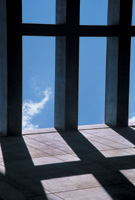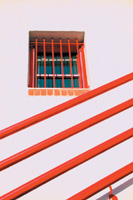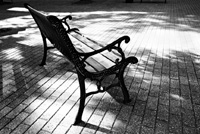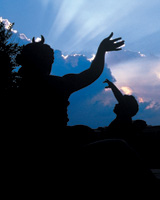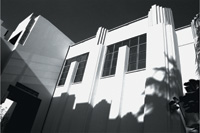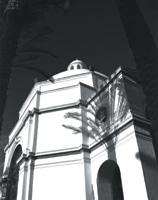Urban Elegance
Personalize Your Images
Funny thing. Creating a portfolio
of pristine city images, I recalled lessons learned from the comedy
business and applied them to photography. Additionally, by finding fresh
perspectives in, oftentimes, ordinary or limited settings, the camera
became a tool for limitless self-expression. I was able to build confidence
and enrich my life. I hope that while shooting urban landscapes (or
whatever strikes your eye) you might experience the same rewards. |
|||
Then, as a personal manager myself, I helped actors, writers, and comedians find their uniqueness. I came to believe that the most truthful voice came from within the "performing artist." Together, the client and I eventually discovered the ruby slippers that had been there all along. Berle had reiterated this perspective, offering, "Don't play for the band!" Customize Your Journey |
|||
Look forward to enjoying a passionate pursuit. Be willing to take new risks. Before you do, take a minute or two to set some artistic goals and to be technically aware. Who, What, Why |
|||
Your vision may not be realized
for some time or it may change along the way. However, having a brief
conversation with yourself before you begin each shoot will pay dividends.
It will not only increase the chances of getting the results you want
but will also give you a sense of accomplishment along the way. |
|||
Your Yen/Yang |
|||
Consider a working definition
of "focus" to be commitment and consistency. Your interpretation
may not be as minimal as these images are--most important is the
clarity of your point of view. Before you move on to another idea, apply
your current perspective to enough different settings that it becomes
apparent. |
|||
Technical Sport |
|||
I generally stop the lens
down, aiming for a deep depth of field. I hope for one or two keepers
per roll of 36 exposures. I like to shoot AE, aperture priority, overriding
it in special circumstances. In stopped-down shooting, a slower shutter
speed is often required. Using the tripod, even when the shutter speed
is not restrictive, assures the sharpness of my images. It also forces
me to relax, setting up each individual shot. |
|||
Most often, I use autofocus.
This gives me one less issue with which to deal. The results are satisfactory.
With the increased depth of field, I generally end up with an image whose
few chosen elements are, relatively, in sharp focus. |
|||
I usually shoot one stop over,
developing at the rated ISO, or pulled one stop. Occasionally, I have
used contrast filters. Ideally, and less orthodox, I shoot to enable prints
whose gray scale includes both pure black and pure white. I scan negatives
and slides and print from Photoshop 7.0 to an Epson 7600. I use Photoshop
to present the original intent of the shot. My guiding thought is: "How
would I print the image in a conventional darkroom?" This translates
into minimal alterations of the original picture. |
